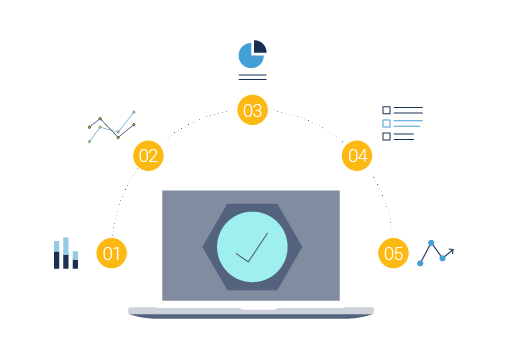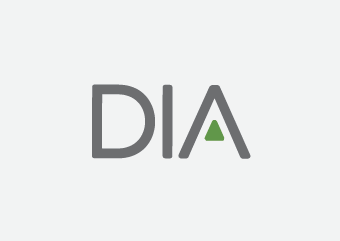eISF Reference Model: The Case for Standardization
 Clinical research sites face a growing number of regulatory, technical, and administrative hurdles associated with maintaining compliance. The largest contributor is the increased scale and complexity of the modern protocol. Where once a study site conducted few, mostly static, protocols, today’s protocols evolve based on real-time data and bring together multiple specialized stakeholders across time zones and continents.
Clinical research sites face a growing number of regulatory, technical, and administrative hurdles associated with maintaining compliance. The largest contributor is the increased scale and complexity of the modern protocol. Where once a study site conducted few, mostly static, protocols, today’s protocols evolve based on real-time data and bring together multiple specialized stakeholders across time zones and continents.
From this growth in complexity, the ability to produce documentation detailed enough to enable both the conduct of a clinical study and the quality of the data produced to be evaluated has overwhelmed regulators, sponsors, and, most of all, research sites.
Standardization represents a significant opportunity to improve record-keeping and simplify compliance at sites.
The TMF Reference Model for Sponsors
In 2009, sponsors and industry professionals discovered that ICH GCP’s list of essential documents did not provide a complete scope of the actual records managed in their trial master file (TMF), the sponsor’s key deliverable of the clinical study. Document nomenclature and filing conventions varied wildly across teams and organizations, and inconsistencies in structure from one TMF to another made it difficult to speak the same language, review quality and completeness, and evaluate potential mergers and acquisitions1. In 2011, the TMF Reference Model, also known as the Drug Information Association (DIA) Reference Model, was released. As sponsors and CROs digitized their records, the TMF Reference model was incorporated into document management and electronic trial master file (eTMF) systems to streamline adoption and simplify information exchange.
The TMF Reference Model is an industry-adopted structure for the TMF that takes the form of an index. This index provides a model of a complete TMF, which can then be customized as needed for a specific clinical study. The reference model assigns documents to a comprehensive taxonomy complete with standard nomenclature to enable consistent filing. Most TMF experts recommend the use of the reference model, but adoption is not mandatory for regulatory compliance.
Bringing Standardization to Sites
While sponsors have enjoyed the benefits of the TMF reference model and eTMF systems, sites continue to execute each protocol without a standard model – and mostly on paper. The problem is exacerbated when sponsors enforce varying binder structures on sites. As a result, the investigator site file (ISF), also known as the site’s regulatory binder, has no standard taxonomy, is unique to each study site, and is often managed in paper medium. Without a standard, sites face increasing difficulty maintaining consistency and compliance across all of their studies.
Some suggest that imposing the TMF reference model on research sites is a solution. However, it is difficult for sites to adopt the reference model because it was developed primarily from a sponsor perspective; thus, it is much larger in scope than is necessary, and its terminology is not intuitive for sites.
Several industry groups, sponsors, and sites agree that a reference model for sites is needed. An ISF reference model will standardize filing structures and produce the following benefits:
- Comprehensiveness: ICH GCP E6(R2)2 contains a list of minimum essential documents only. An eISF reference model would standardize filing expectations for documents collected, including those not listed on ICH GCP’s minimum required document list.
- Consistency: Site coordinators can more easily transition between studies without relearning a file structure.
- Competency: Clinical research professionals can be trained easily and effectively with a model that presents regulatory standards and associated materials in an organized and structured way.
- Completeness: With a consistent model and site-wide expectations, site staff can judge the completeness of the eISF easily and without manipulating any paper documents.
- Efficiency: Standard nomenclature reduces confusion about a document’s contents and reduces the time spent locating a document.
- Study start-up: Site staff can begin study start-up immediately without the need to create a custom file structure.
- Technology adoption and integration: The standardized file structure and metadata of a comprehensive reference model facilitates implementation of an electronic investigator site file (eISF) simplifies integration with other eClinical tools, including CTMS, IRB, and other systems.
- Automation: Regulatory workflows, such as routing documents for review and signature, can be automated within electronic systems to improve efficiency and ensure adherence to SOPs.
- Site-sponsor collaboration: Monitors can more easily transition between study sites and get up-to-speed on new sites. A standard data model will also lay the foundation for document exchange between eISF and eTMF systems.
The result would be improved efficiency, reduced regulatory risk, and better study outcomes—a clear win-win for all study stakeholders.
Prior Attempts to Standardize the ISF
Because of the benefits of an ISF reference model, several draft models have been proposed in the last decade. Of the models that have gained greater attention, no one model has gained widespread use. The two most common weaknesses of the models include:
- A Checklist Mindset: Checklists of paper documents that should be filed in a site’s paper regulatory binder have existed for decades. Expected document checklists, although a useful tool, distract stakeholders from thinking critically about the study-specific circumstances and associated documents of their study. Both ICH GCP and the TMF Reference Model User Guide caution against their respective use as a completeness checklist without stakeholder input and customization.2,3
- A Folder Structure Mindset: People are used to storing and managing electronic documents in digital folder structures because they closely resemble paper folders. Some ISF reference models are biased towards old-fashioned paper folder structure practices and simply map a site’s documents to digital file folders. However, this doesn’t provide sites the guidance necessary to modernize their own processes. Without a comprehensive ISF model built with electronic purpose-built systems in mind, sites can’t align on broader standards, old habits risk returning, and the proverbial can is kicked further down the road.
A Real-World Solution for Sites
A reference model that meets the needs of sites, improves quality, and provides a path toward a better future, must be comprehensive enough to support a site’s transition into digital and purpose-built systems. Technology-based ISF solutions need to fully address the present and future needs of sites in order to add value.
“The purpose here is not to go to something that’s an ‘e’. The purpose is not to go into an eISF or some digital format. I could use Microsoft Word, that’s not an improvement. The purpose is to improve quality,” according to Jeff Kingsley, Founder and CEO of IACT Health.4
To achieve this goal, a more comprehensive reference model is needed and, at minimum, must contain the following elements:
Fundamentals
- Record type: Each record can be identified by a commonly understood ‘document type’ (e.g., CV or Protocol) and each type includes synonyms and a definition.
- Naming convention: Each document is assigned according to a standardized file naming convention (e.g., {Study ID} Protocol, {Document Date}), to reduce confusion about document content, eliminate document duplication, and increase monitoring efficiency.
- Filing location: Each document is placed within a folder-based structure (e.g. Safety or Subject). Without the constraints of a paper binder, a document can be placed in multiple folders simultaneously, making every document easily locatable.
- Metadata: Each document is assigned metadata (non-content related information stored as part of a file, such as the file name, date created, expiration date, etc.) based on its type. Metadata is a non-negotiable in a reference model for electronic record-keeping to ensure consistent naming conventions, searching, reporting, and streamlines the transfer of documents into the sponsor’s eTMF.
Collaborative Mapping
- TMF mapping: Each document, where applicable, is mapped to the associated artifact(s) in the eTMF Reference Model. Mapping documents to their respective place in the TMF Reference Model is foundational for interoperability and can also be used in an electronic system to display a study’s documents in an alternative sponsor-friendly folder structure.
- ICH GCP mapping: Each document is mapped to the list of minimum essential documents in ICH GCP, giving sites greater confidence in their compliance and helping the industry better understand the scope of records included in an ISF.
Key Attributes
- Signature requirements: Each document type includes clear signature requirements, eliminating wasted time collecting unnecessary signatures and reducing stakeholder stress.
- Inspectable document status: Each document is assigned to an inspectable or non-inspectable status, providing a common understanding of which records may be subject to inspection.
- Expiration status: Each document type is assigned an appropriate expiration date. Expiration dates can sometimes be calculated automatically, and expiration date status for all documents can be automatically collected into a report.
- Protected Health Information (PHI) content status: Any document containing PHI can be flagged, allowing sites to better comply with existing PHI policy and emphasizing where additional security or data protection measures may be needed.
- Originality status: Each document is classified as a copy or original. Understanding the originality of a document makes it clear which documents must go through a certified copy creation process and is essential for the elimination of paper.
The goal of a comprehensive model is not to increase complexity, but to achieve the long-term benefits of standardization, including increased quality, reduced regulatory risk, better visibility through reporting, and process automation, which will ultimately lead to happier sites and better study results.
The Veeva eISF Reference Model
Veeva believes an international, comprehensive eISF standard will allow research sites to better meet their regulatory obligations by freeing up precious resources and returning a site’s focus to what is most important: the thoughtful care of patients and the production of knowledge that heals.
To that end, we are releasing a free and publicly available eISF reference model. The Veeva eISF Reference Model was created based on feedback from the real-life needs of busy research sites and draws on our experience as an active member of the TMF Reference Model Steering Committee and the leader in document and data technology for the clinical research industry. The model is actively in use by sites across the globe and is immediately useful to any study site whether or not the site uses Veeva software.
Access the Veeva eISF Reference Model >
References:
1. Phlexglobal, 2019. 10 Short Years Ago, the TMF Reference Model Was Born.
2. FDA.gov, 2018. E6(R2) Good Clinical Practice: Integrated Addendum to ICH E6(R1) Guidance for Industry.
3. TMFRefModel.com, 2018. TMF Reference Model User Guide.
4. Jeff Kingsley, 2019. Empowering Sites to Do More with Less (Paper).
Want exclusive tips and resources?
Be the first to recive upcoming news, join our mailing list.
Subscribe

